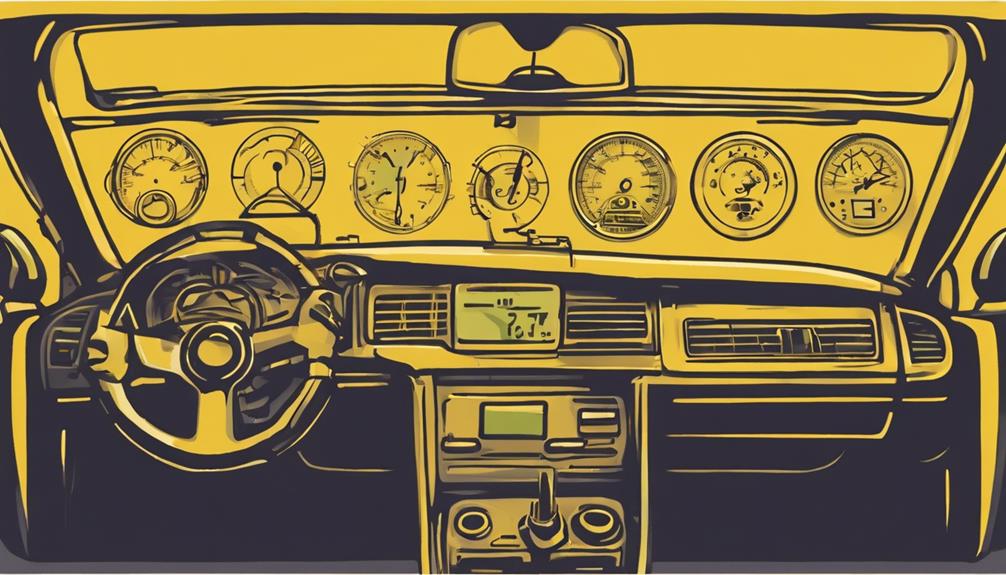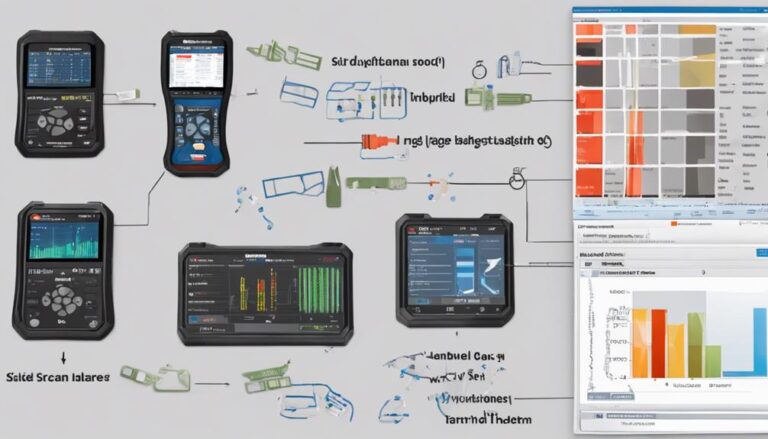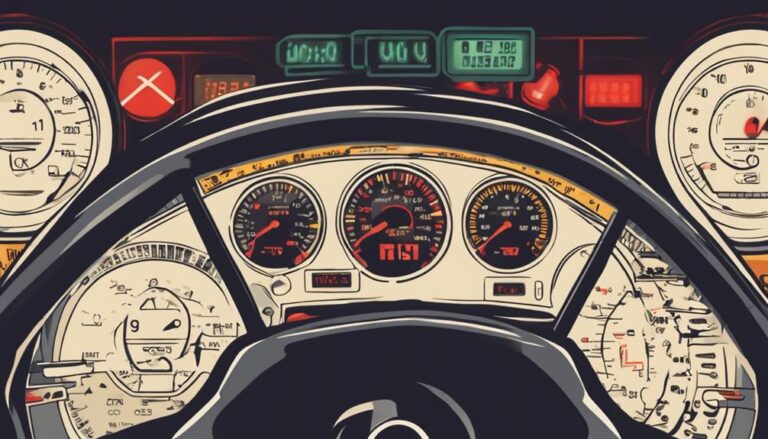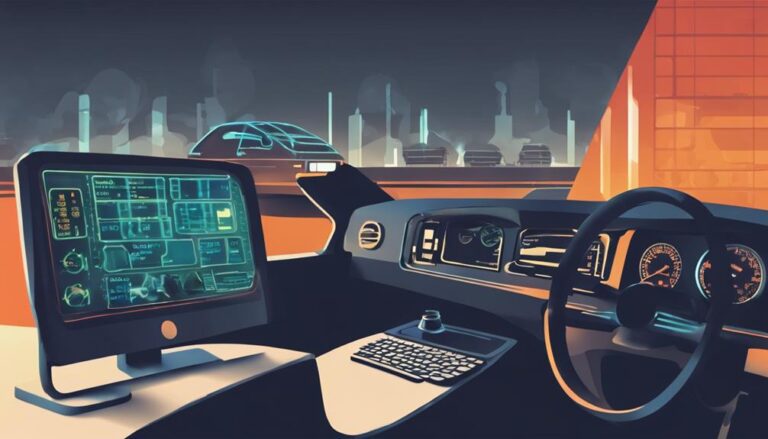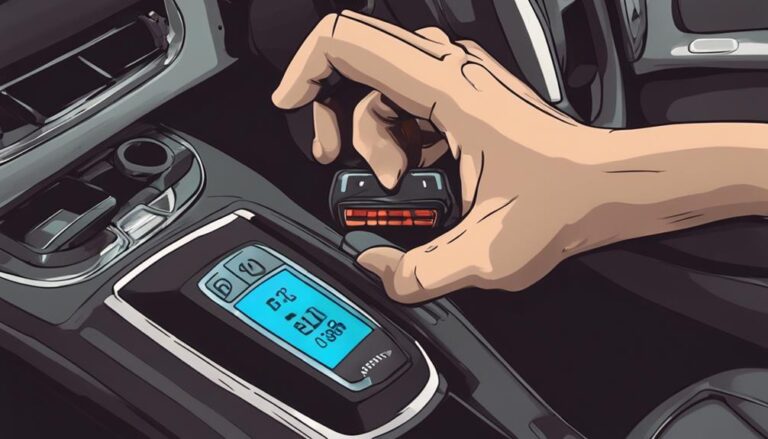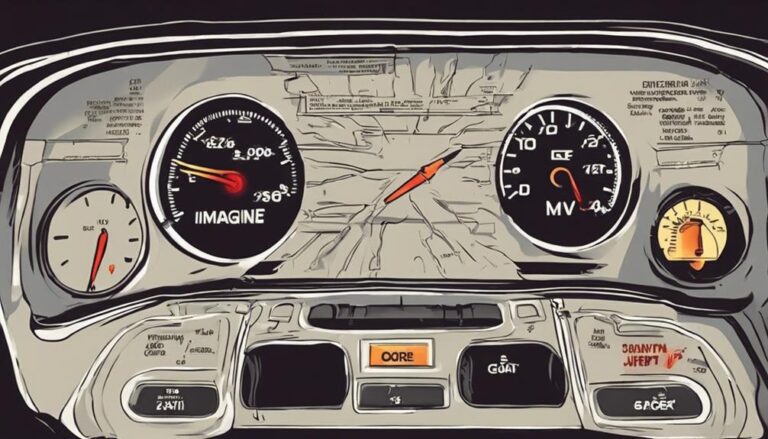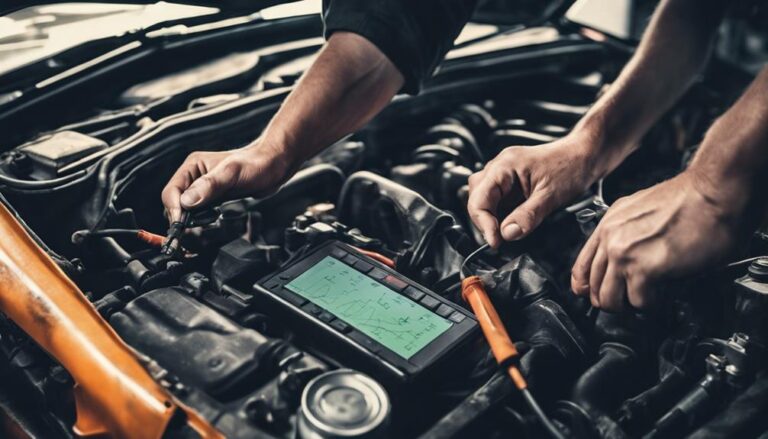Why Is My Check Engine Light On?
Have you ever wondered that approximately 10% of all vehicle problems reported are related to the check engine light?
When this little warning beacon illuminates on your dashboard, it can be unsettling, but understanding the reasons behind it is crucial.
From simple fixes to potential engine complications, the check engine light serves as a vehicle's early warning system.
So, next time it pops up, don't ignore it; there's more to this light than meets the eye.
Key Takeaways
- Check Engine Light warns of potential problems in the vehicle.
- Ignoring the light can lead to reduced power and safety risks.
- Utilize OBD-II scanners for efficient diagnosis and prompt action.
- Addressing alerts promptly helps prevent further damage and ensures vehicle safety.
Common Causes of Check Engine Light
When your check engine light illuminates, it's commonly triggered by a few specific issues that warrant prompt attention. One of the common causes is a faulty sensor, such as an oxygen sensor. This sensor helps regulate the air-fuel mixture, and if it malfunctions, it can lead to poor fuel economy and higher emissions.
Another potential culprit is an exhaust leak. An exhaust leak can occur at various points in the exhaust system, including the manifold or pipes, and can result in louder engine noise, reduced power, and even dangerous fumes entering the cabin.
Ignoring these issues can have serious consequences, ranging from reduced engine performance to environmental concerns. It's crucial to address these problems promptly to prevent further damage and ensure your vehicle operates efficiently.
Importance of Check Engine Light
The check engine light serves as a crucial indicator warning of potential vehicle issues that require prompt attention. Ignoring this warning can result in reduced power, damage to critical components, and lead to costly repairs. Regular engine light maintenance is essential for vehicle longevity and performance. Here is a table highlighting the significance of the check engine light and the importance of timely action:
| Significance of Check Engine Light | Engine Light Maintenance |
|---|---|
| Warns of potential problems | Regular vehicle check-ups |
| Prevents further damage | Prompt action upon illumination |
| Ensures vehicle safety | Seeking professional help when needed |
Understanding the significance of the check engine light and maintaining it promptly can prevent severe consequences. Regular vehicle check-ups and immediate action upon seeing the light can help keep your vehicle running smoothly and safely.
Check Engine Light Diagnosis Steps
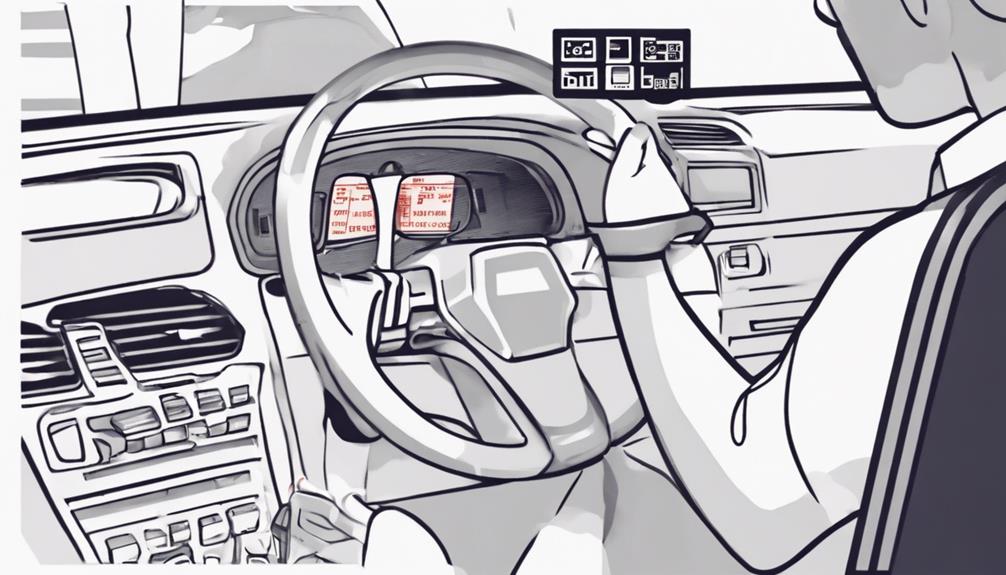
Curious about how to diagnose your check engine light issue efficiently? When facing a check engine light, utilizing an OBD-II scanner can be a game-changer in pinpointing the problem. These scanners offer benefits like accessing error codes that provide insight into the issue triggering the light.
With a DIY check engine light diagnosis, start by connecting the OBD-II scanner to your car's OBD-II port. This connection grants you access to the onboard diagnostic system, allowing you to retrieve error codes promptly. While these error codes serve as valuable clues, it's essential to understand the limitations of OBD-II scanners.
Although they can identify the specific problem indicated by the check engine light, they may not always offer a detailed diagnosis. However, investing in an OBD-II scanner can be cost-effective compared to multiple trips to a repair shop. By analyzing the error codes, you can kickstart the troubleshooting process and address the issue efficiently.
Addressing Check Engine Light Alerts
To effectively address check engine light alerts, promptly taking action is crucial to prevent potential damage and maintain optimal vehicle performance. Ignoring the check engine light can result in reduced power, potential damage, and expensive repairs.
Some myths suggest that the light indicates minor issues, but in reality, it can signify a range of problems, from a loose gas cap to serious engine issues. While some DIY fixes like tightening the gas cap may resolve simple issues, many problems require professional diagnosis and repair.
When the check engine light comes on, it's essential to address it promptly to prevent further damage. The trouble code stored in the computer memory provides valuable information about the underlying issue triggering the light.
Seeking professional help for accurate diagnosis and repair is advised to ensure the problem is effectively resolved and to prevent major engine damage. Taking swift action can help maintain your safety on the road and avoid costly repairs down the line.
Tips for Check Engine Light Resolution
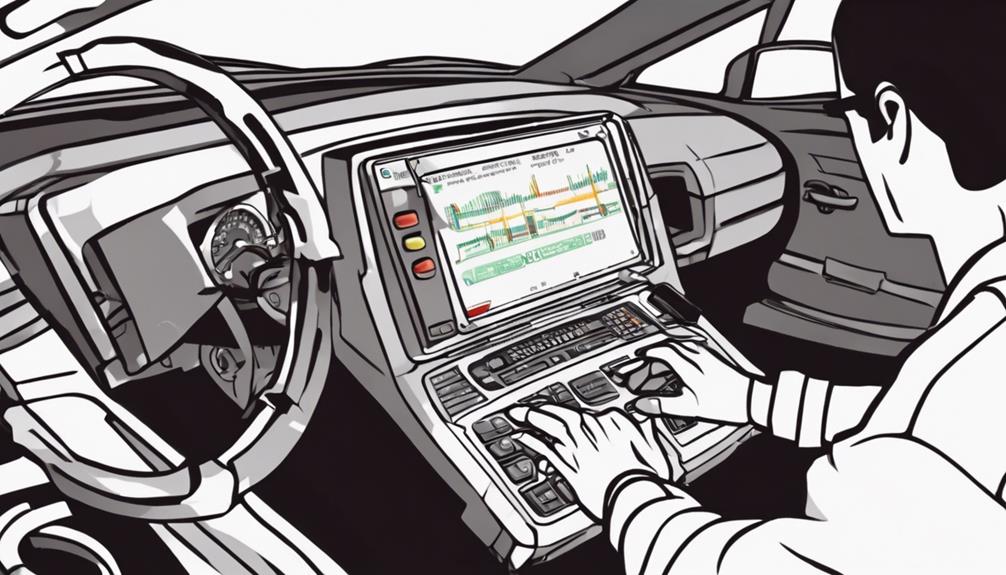
Regularly checking your dashboard gauges and lights for signs of low oil pressure or overheating can provide crucial insights for resolving check engine light issues. Here are some tips to help you tackle the check engine light concern:
- Gas Cap Solution: Start by tightening your gas cap. A loose gas cap is a common culprit for triggering the check engine light. Ensure it's securely fastened to prevent further complications.
- Dashboard Indicators: Pay close attention to other dashboard indicators, such as low oil pressure or overheating. Addressing these issues promptly can help in resolving the check engine light problem.
- Built-In Diagnostics: If your vehicle has built-in diagnostic services, utilize them to pinpoint the specific issue triggering the check engine light. This can streamline the resolution process.
- Performance Maintenance: Reduce speed and load on your vehicle when the check engine light comes on. This can prevent potential damage and costly repairs associated with the issue, ensuring optimal performance.
Frequently Asked Questions
What Is the Most Common Reason for Check Engine Light?
The check engine light often signals issues with the fuel injector or oxygen sensor. These components, when faulty, trigger the light to illuminate. Addressing these problems promptly can prevent further damage to your vehicle.
Is It OK to Drive With Check Engine Light On?
Driving with the check engine light on is not safe. It's a warning sign indicating a problem that demands attention. Ignoring it can lead to damage, reduced efficiency, and costly repairs. Address it promptly for safety and vehicle health.
Why Is My Check Engine Light on but My Car Runs Fine?
You might wonder why the check engine light is on when your car runs fine. Sometimes it's a false alarm triggered by a sensor malfunction. It's essential to address this promptly to prevent potential issues.
What Is the First Thing to Check When the Check Engine Light Comes On?
When the check engine light comes on, the first thing to check is your gas cap. A loose or faulty gas cap can trigger the light. Ensure it's tight to prevent fuel evaporation and maintain optimal vehicle performance.
Conclusion
In conclusion, when your check engine light comes on, it's crucial to address the issue promptly to prevent further damage and costly repairs.
For example, ignoring a loose gas cap warning can lead to decreased fuel efficiency and potential engine damage.
By taking the necessary steps to diagnose and resolve check engine light alerts, you can ensure your vehicle's performance, safety, and longevity.
Don't delay, seek professional help for accurate diagnosis and repair.

